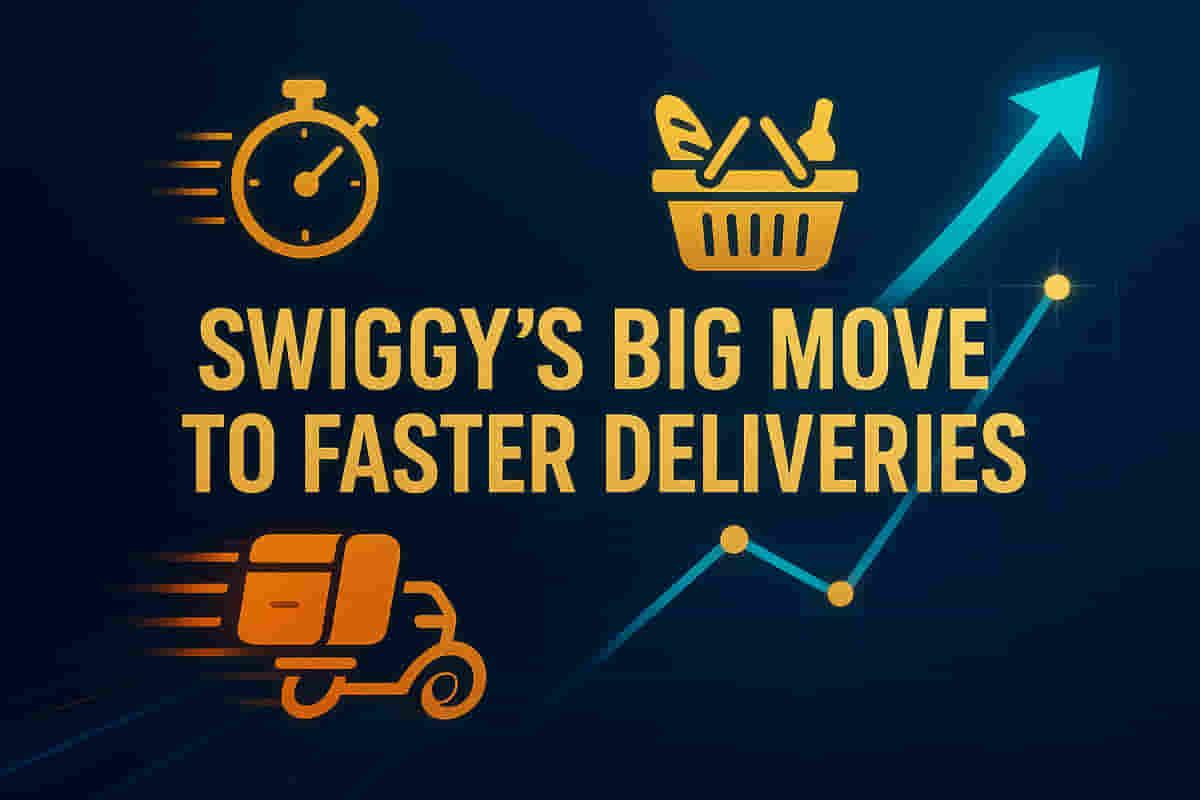Swiggy's Instamart to adopt inventory-led model, plans ₹10,000 Cr fundraising
Consumer Products
|
30th October 2025, 2:56 PM

▶
Short Description :
Detailed Coverage :
Swiggy's quick commerce business, Instamart, is set to evolve its operational model by moving towards an inventory-led approach, mirroring the strategy of rival Blinkit. This change is considered an eventuality by Swiggy's cofounder and group CEO, Sriharsha Majety. The primary goal behind this shift is to enhance efficiency and profitability, moving away from aggressive network expansion seen previously. In the second quarter of FY26, Instamart added only 40 dark stores, a significant slowdown compared to the 316 added in Q4 FY25, while Blinkit added 272 stores in Q2 FY26.
Despite the slower expansion, revenue growth remained robust, attributed to improved store productivity and higher order density. Instamart operates over 1,100 dark stores and has maintained over 100% growth in Gross Order Value (GOV) for three consecutive quarters while reducing losses. The contribution margin has improved significantly, moving from nearly -6% a year ago to -2.6% in Q2 FY26, with an expectation to reach contribution break-even by June 2026.
An inventory-led model is crucial for better cost management, faster stock replenishment, reduced waste, and improved order fulfillment rates. This strategic pivot is supported by recent investments in larger format stores and a planned fundraising of ₹10,000 crore via QIP. This funding aims to fuel Instamart's expansion and the transition to the new model, intensified by competition from rivals like Zepto, which recently raised $450 million.
Instamart has also successfully diversified its offerings beyond groceries, with categories like electronics, personal care, household items, and pharmacy now contributing around 25% of its Gross Merchandise Value (GMV), up from less than 15% a year ago. Pharmacy, in particular, has shown strong growth. The company aims to increase non-grocery GMV to about 50% of its total GMV. This diversification has helped boost the average order value (AOV) to ₹697 in Q2 FY26.
Swiggy is also optimistic about advertising revenue from Instamart, expecting it to eventually reach 6-7% of GMV, surpassing the 4% seen in its food delivery business. Based on these initiatives, Swiggy anticipates Instamart will achieve overall break-even by June 2026 and maintain long-term EBITDA margins of approximately 4%.
Impact: This strategic shift by a major player like Swiggy towards an inventory-led model, coupled with significant fundraising, is expected to intensify competition and drive innovation in the quick commerce sector in India. It highlights a market maturation where profitability and operational efficiency are becoming key drivers, potentially leading to consolidation and a more defined competitive landscape. The success of this model could influence other players and investor sentiment towards the quick commerce segment. Rating: 8/10
Heading: Explanation of Terms Dark Store: A fulfillment center or warehouse used by e-commerce companies for rapid delivery, typically serving a limited geographical area and stocking a curated range of products. Inventory-led Model: A business model where a company holds and manages its own stock of goods, allowing for greater control over sourcing, pricing, and availability, as opposed to a marketplace model. Gross Order Value (GOV): The total value of all orders processed through a platform before any deductions for discounts, returns, or cancellations. Contribution Margin: The revenue remaining after deducting variable costs, representing the amount available to cover fixed costs and contribute to profit. Adjusted EBITDA: Earnings Before Interest, Taxes, Depreciation, and Amortization, adjusted for certain non-recurring or non-cash items to provide a clearer picture of operational performance. Qualified Institutions Placement (QIP): A method used by listed Indian companies to raise capital by issuing equity shares or other securities to 'Qualified Institutional Buyers' (QIBs) without diluting ownership significantly. Gross Merchandise Value (GMV): The total value of merchandise sold over a given period, before deducting fees, commissions, returns, and refunds. Average Order Value (AOV): The average amount spent by a customer per order on a platform. EBITDA Margin: A profitability ratio calculated by dividing EBITDA by revenue, indicating how efficiently a company is generating profit from its sales.